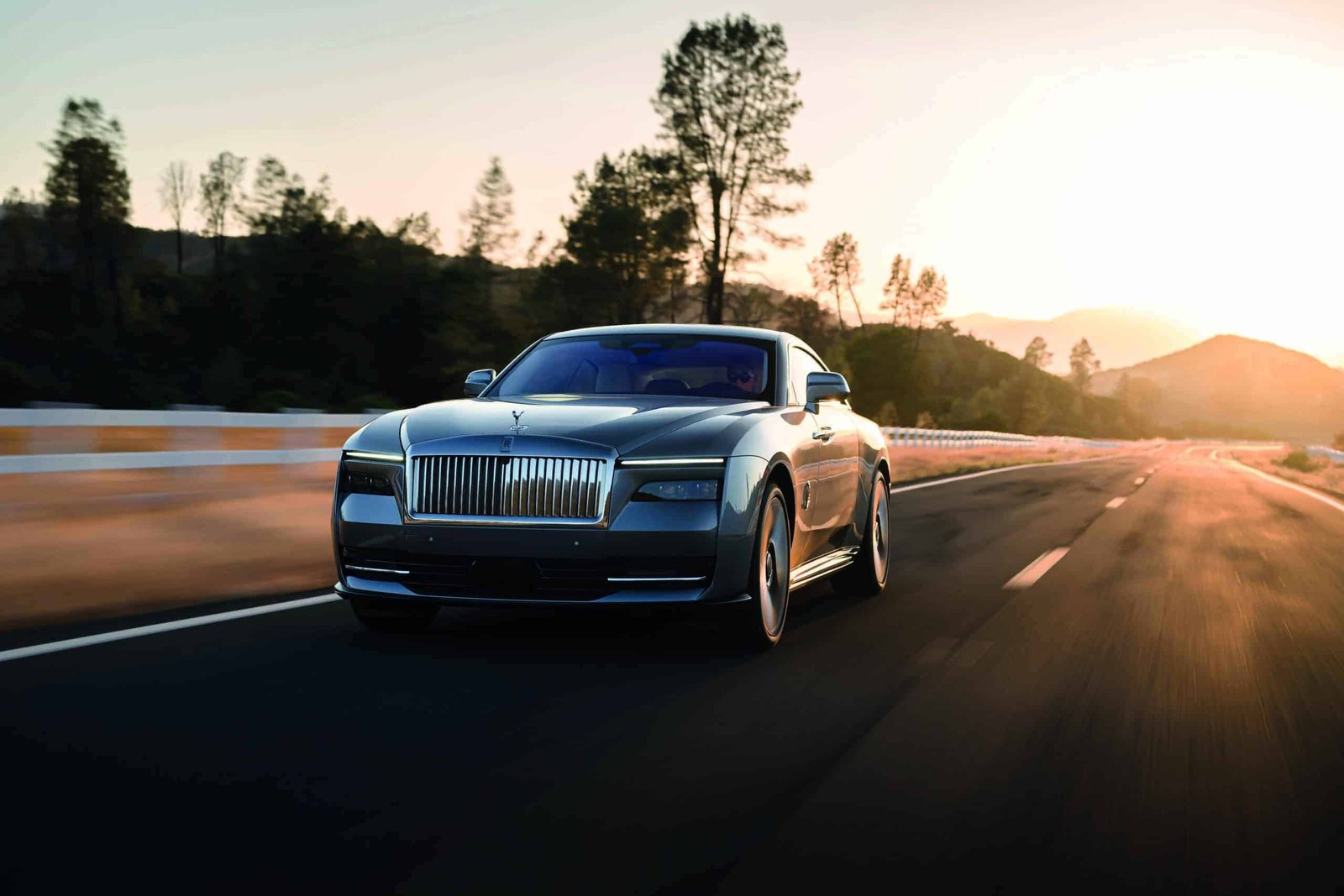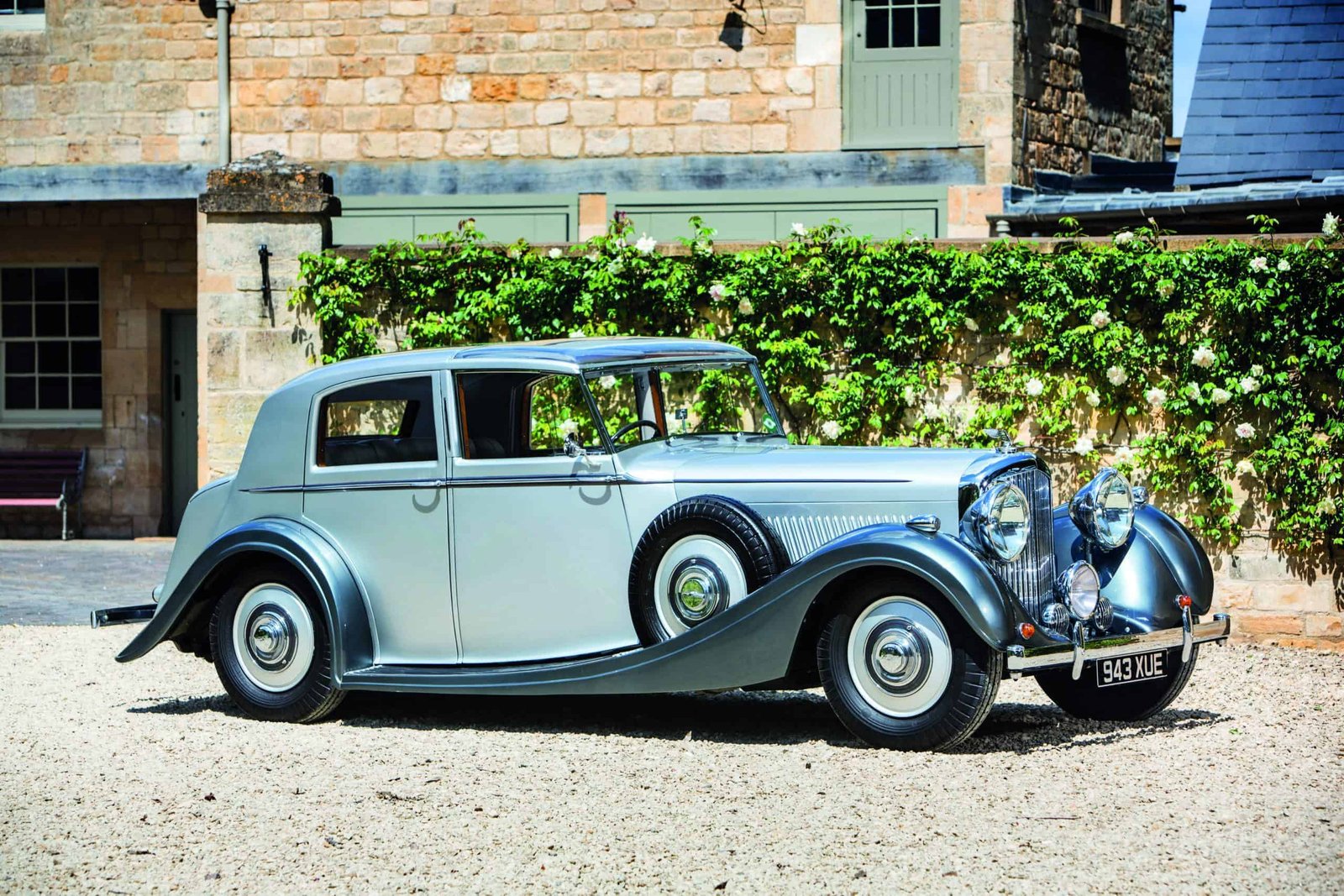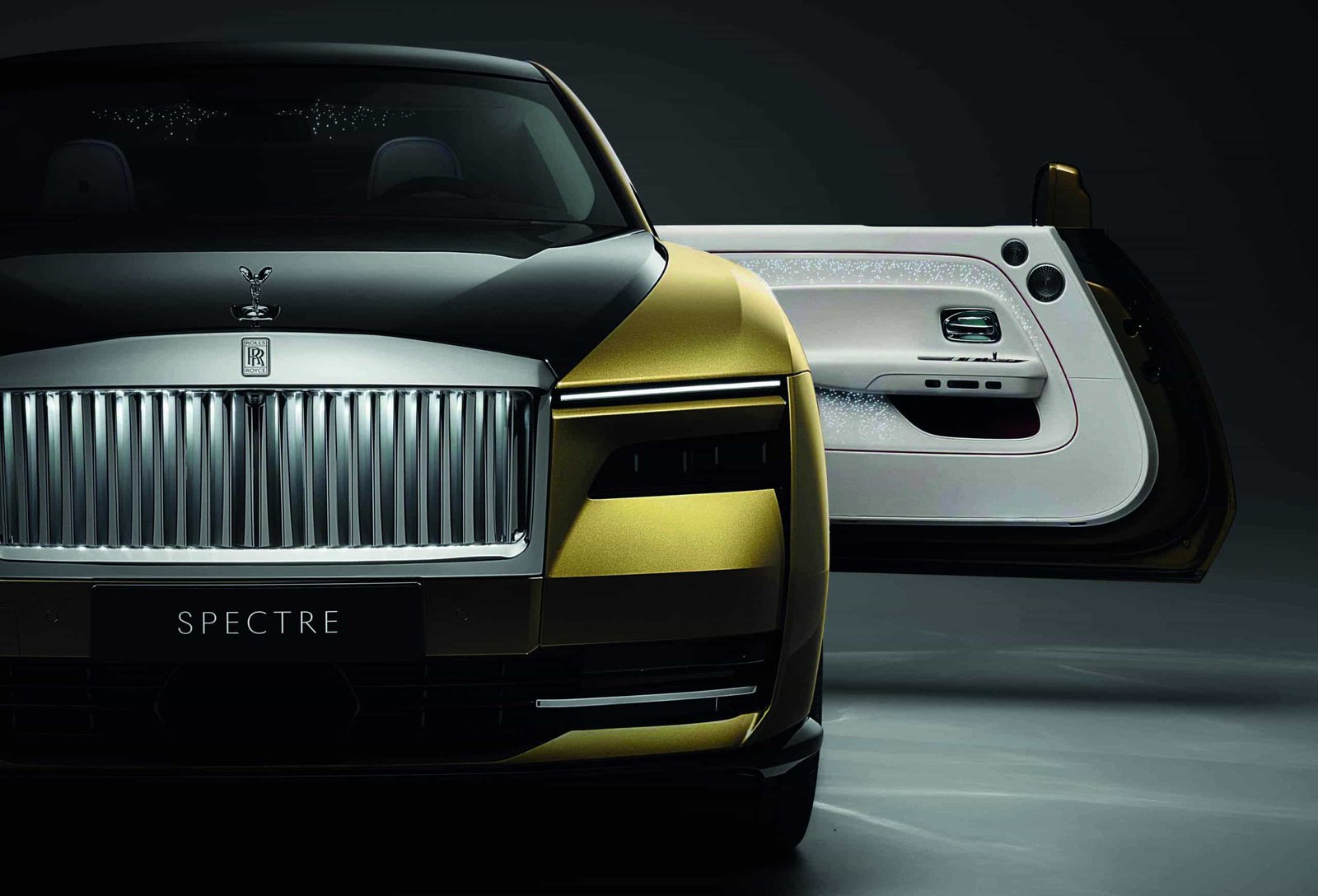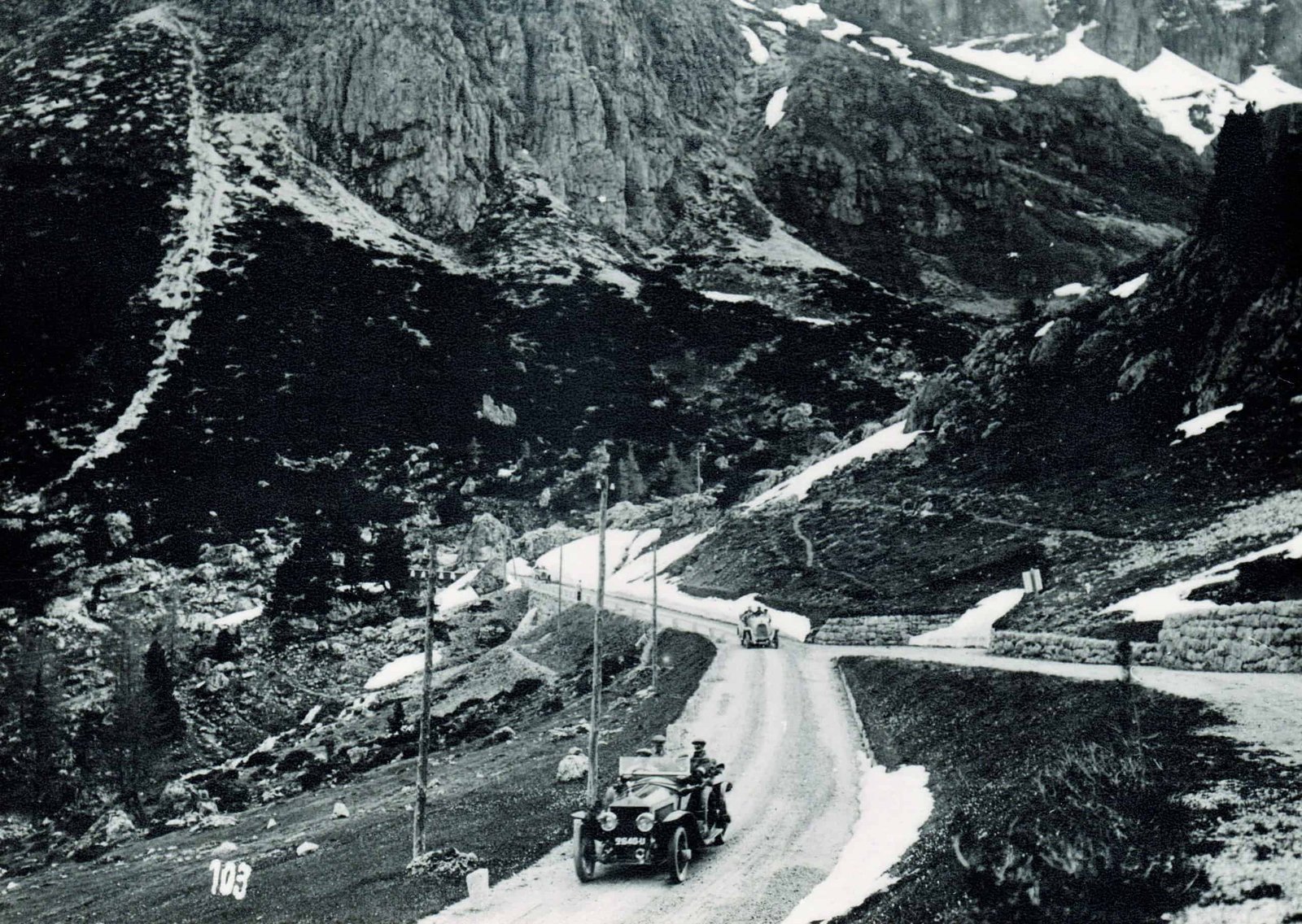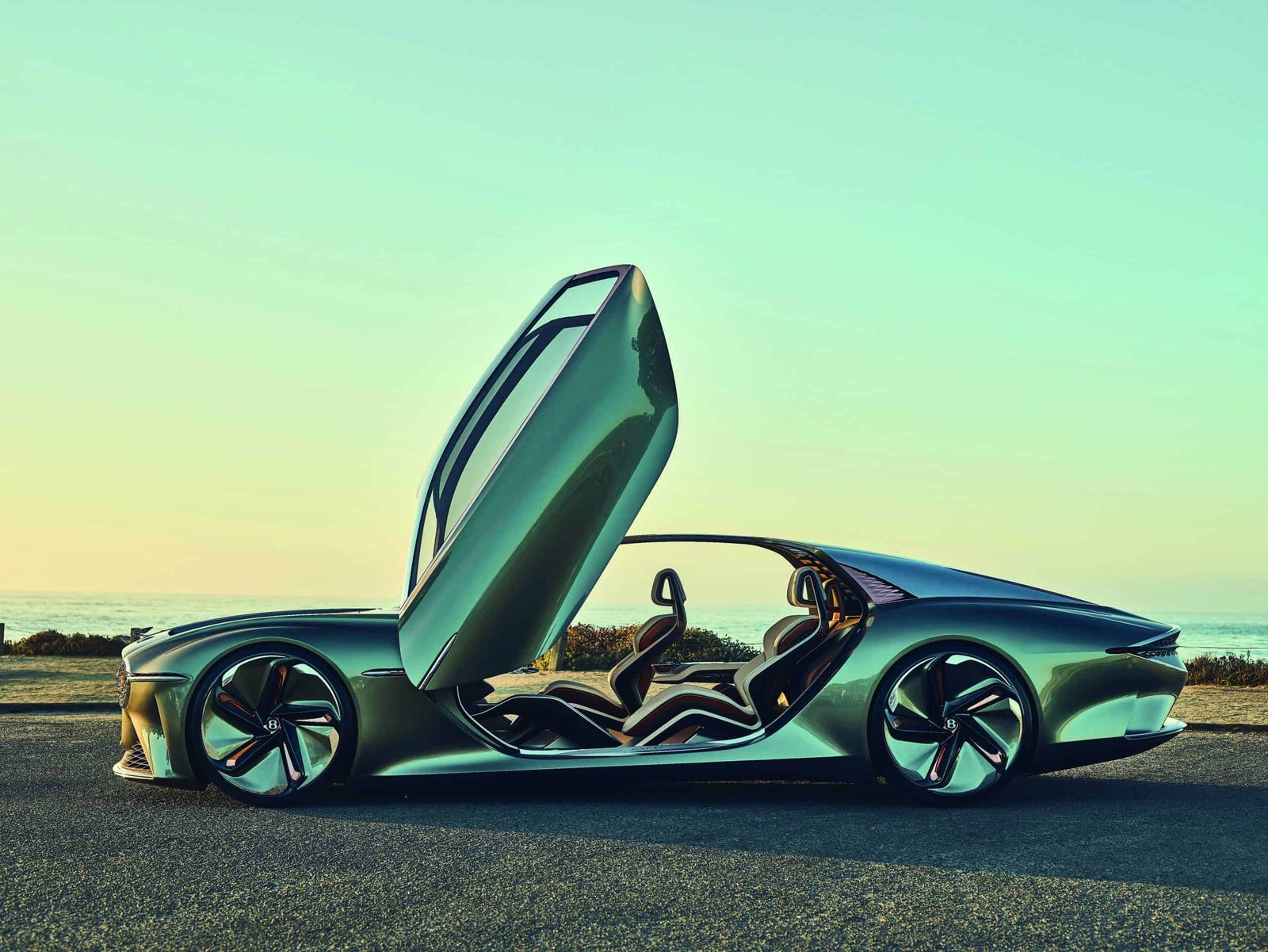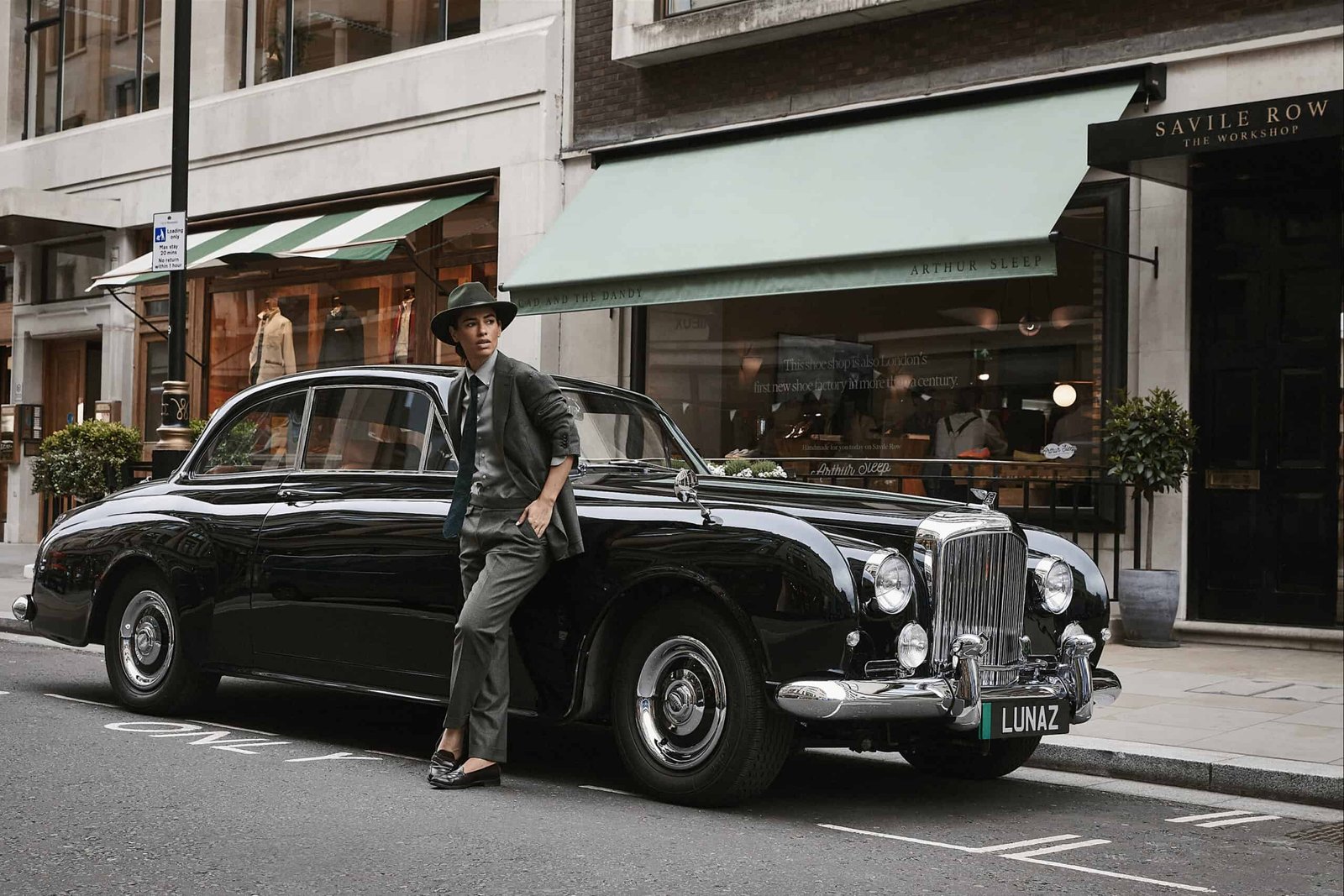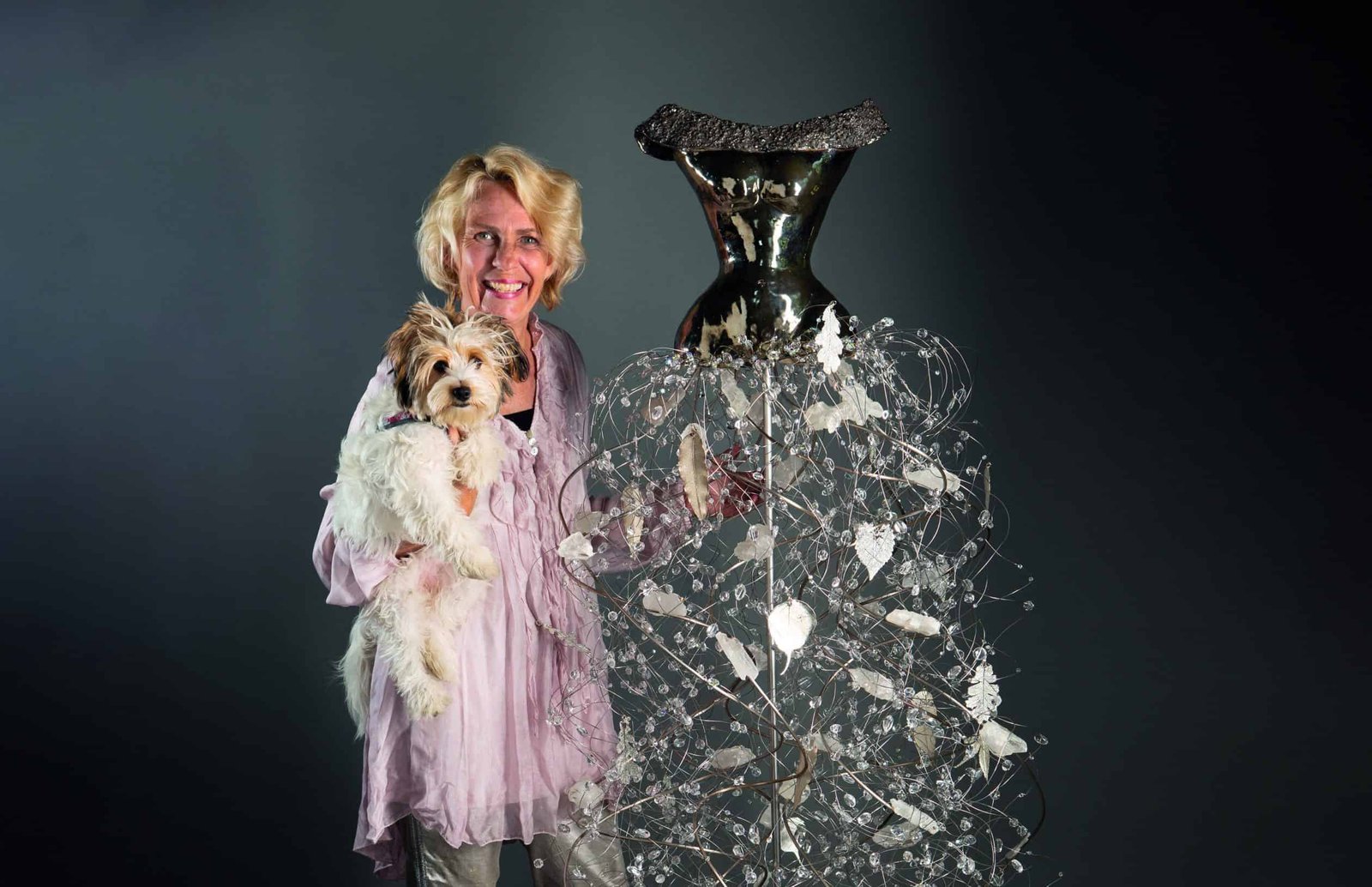Using primal techniques and the female form, Estella Fransbergen fashions elegant fine art sculptures from clay, bronze, glass and precious stones
As a child growing up in South Africa, Estella Fransbergen used to play with dirt. She would take mud from the ground and carefully fashion it into tiny pots and bowls to be baked on homemade fires. She studied art in the Netherlands, improving her skill, and then moved to the US, where she began to pour her passion, her growing knowledge and strong sense of craft into an ever-changing series of striking but timeless fine art sculptures.
Estella’s clay-fired female torsos are adorned with billowing skirts and dresses made from beautiful gems and precious stones, which gleam and glisten when placed on lighted pedestals. “I have always made the female form, and I add stones because they have energy, colour and elegance,” she says. “I feel professional women sometimes forget their feminine side. My work shows strength through the torso, while the embellishment and decoration show the playfulness we can’t forget about and shouldn’t ever lose.”
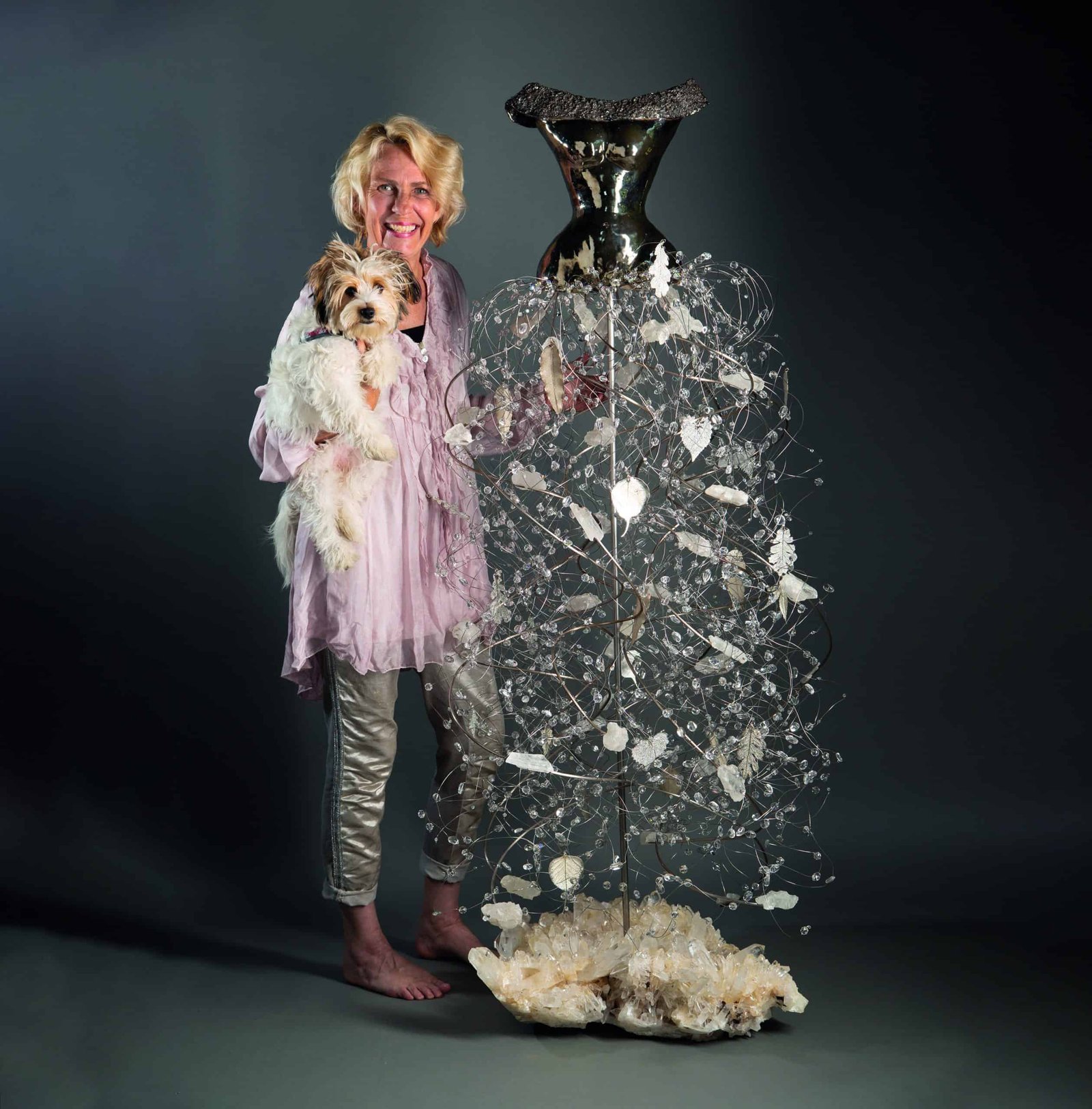
These essential principles are the same whether Estella is using different materials for the decoration, such as feathers, shells or lace, or when the torsos are made from bronze or glass rather than clay. Sculptures can be life-size or small, and each one is unique. When working with clay, she uses the coil technique to make the female form; taking sausages of clay and turning them into ribbons, which are stacked to create the torso. The torso is then baked, sometimes in sawdust but often in a raku pit, a raw and primal technique derived from Japan but reminiscent of her African childhood.
“With raku firing you have a big pit fire and then bring the heat up to 1,800 degrees,” she explains. “I put the ‘girls’ in there, stack up the wood and then sit in front of the fire until I feel they’re ready. It creates this beautiful, unpredictable, organic texture with the glaze. Then you remove the form and plunge it into a container with pine needles and other combustibles so it flames up – a very violent and dramatic phase that changes the glaze again. Then you shock it with cold water, which adds a crack to the glaze. You don’t have complete control of the outcome. I love the imperfection.”
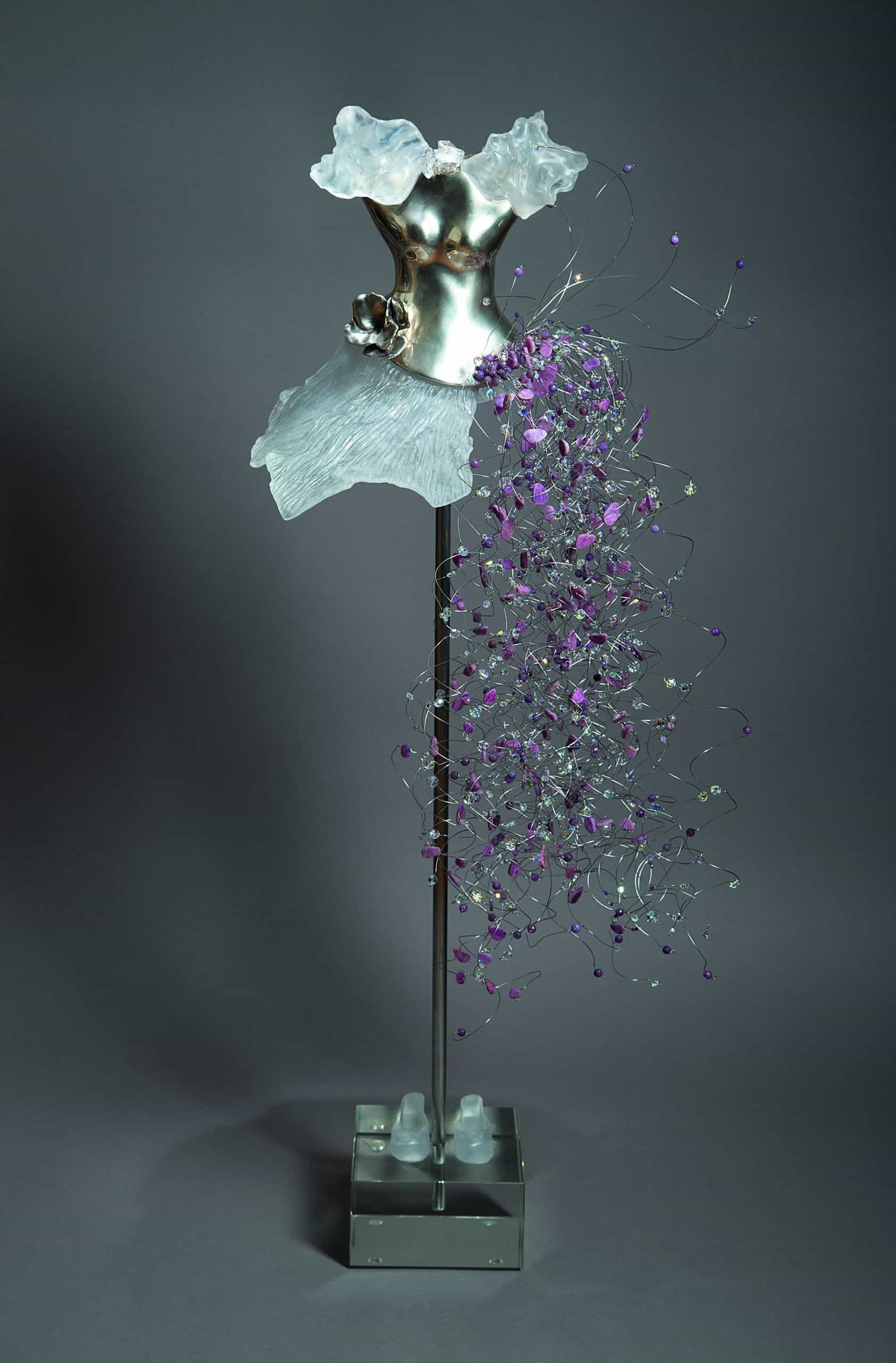
Estella acquires the stones at an annual gem show in Tucson, Arizona, where she makes her choices carefully – always ensuring she has just enough for one sculpture so she does not repeat herself. She uses amber, opals, diamonds, quartz and amethyst, as well as Austrian crystals. The stones hang from the torso like waterfalls, as seen in the sculpture made from cast glass, highly polished bronze, rubies and Austrian crystals (42 x 16in); or sparkle as they swirl around, as seen in the design featuring pearls, silver-electroplated leaves and a quartz base (71 x 24in). The effect is dynamic and dramatic, earning her a string of admirers.
“Collectors don’t want the same thing, so I evolve continuously,” she says. “I have all these different styles so you can have more than one sculpture in a house without them looking the same. There’s an intrinsic value to them because of the stones I use, and these pieces take time to make; but they reflect all the art and craft I have developed over the years. People often ask how long it takes to make and the answer is a lifetime. It’s a distillation of all my experiences up to this point, and the strength and femininity of women is at the heart of it.”
www.estellafransbergen.com



